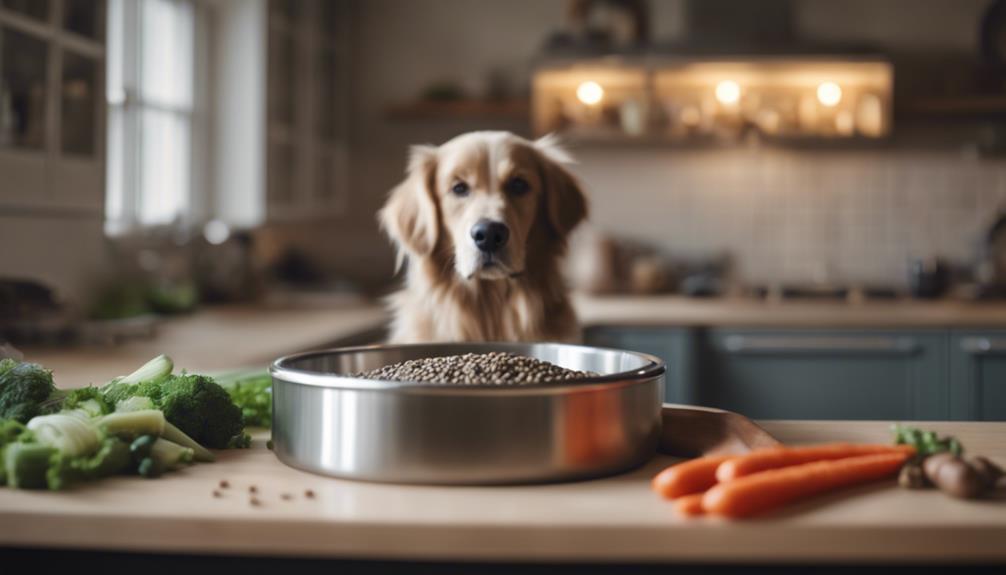Transitioning your dog to a new diet is a critical process that requires careful consideration and a methodical approach to avoid gastrointestinal disturbances. This not only involves selecting a suitable replacement but also necessitates a gradual integration of the new food alongside the current one. By monitoring your dog's response, you can identify potential issues early on. However, the nuances of this transition can vary significantly based on individual needs, making it essential to explore the most effective strategies for success. What factors should you consider to ensure a seamless adjustment?
Understanding Corgi Nutritional Needs

Understanding the unique nutritional needs of Corgis is essential for optimizing their health and well-being. Corgis have specific dietary requirements that differ from other breeds, primarily due to their body structure and activity levels. Essential nutrients for Corgis include proteins, healthy fats, vitamins, and minerals.
- Proteins: Support muscle development and overall health.
- Healthy Fats: Provide energy and promote a healthy coat.
- Vitamins: Ensure proper immune function and development.
- Minerals: Aid in bone health and metabolic processes.
Balanced meals should contain these nutrients in appropriate ratios to maintain a healthy weight and prevent obesity, a common issue in Corgis.
Understanding these needs will help owners make informed choices for their beloved pets.
Choosing the Right New Diet
Selecting an appropriate diet for your Corgi involves careful consideration of their specific nutritional needs and any changes in lifestyle or health status. When choosing a new diet, you can opt for either commercial diets or homemade meals, each offering unique benefits.
Commercial diets: These are convenient and often formulated to meet specific health requirements.
Homemade meals: Preparing food at home allows for greater control over ingredients, ensuring high-quality nutrition tailored to your dog's preferences.
Life stage considerations: Puppies, adult dogs, and seniors have different dietary needs, so choose accordingly.
Always consult with a veterinarian to determine which option best suits your Corgi's health and lifestyle. This helps avoid potential issues and promotes overall well-being.
Gradual Transition Process

A gradual transition process is essential for introducing a new diet to your dog, as it minimizes the risk of digestive upset and helps your Corgi adjust to the changes more comfortably.
Start by mixing a small amount of the new food with the current diet. Over a period of seven to ten days, gradually increase the proportion of the new food while decreasing the old one.
This transition duration allows your dog to adapt to different food textures and flavors. For example, if switching from dry kibble to wet food, alternate the types each day.
Always observe your dog's response during this period, adjusting the mix as needed to ensure a smooth transition.
Monitoring Your Corgi's Response
Careful observation of your Corgi's behavior and health is crucial during the transition to a new diet, as it helps identify any adverse reactions or adjustments needed in their feeding plan.
During this period, monitor for any behavioral changes that may indicate discomfort or dissatisfaction with the new food. Additionally, keep an eye on your pet's digestive health, as changes in diet can affect stool consistency and appetite.
Consider tracking the following aspects:
- Eating habits: Note any reluctance to eat or changes in appetite.
- Stool quality: Observe for any signs of diarrhea or constipation.
Common Challenges and Solutions

Transitioning your dog to a new diet can present several challenges that may require thoughtful solutions to ensure a smooth adjustment.
One common issue is dietary allergies, which can manifest as skin irritations or digestive problems. It's crucial to monitor your dog closely for any adverse reactions during the transition.
Additionally, portion control can be difficult, as dogs may be tempted to overeat when introduced to new foods. To manage this, adhere to the recommended serving sizes and measure their food accurately. Gradually mixing the new diet with the old can ease this process.
Lastly, consult your veterinarian if challenges persist, as they can provide tailored advice to address your dog's specific needs and ensure a healthy transition.

